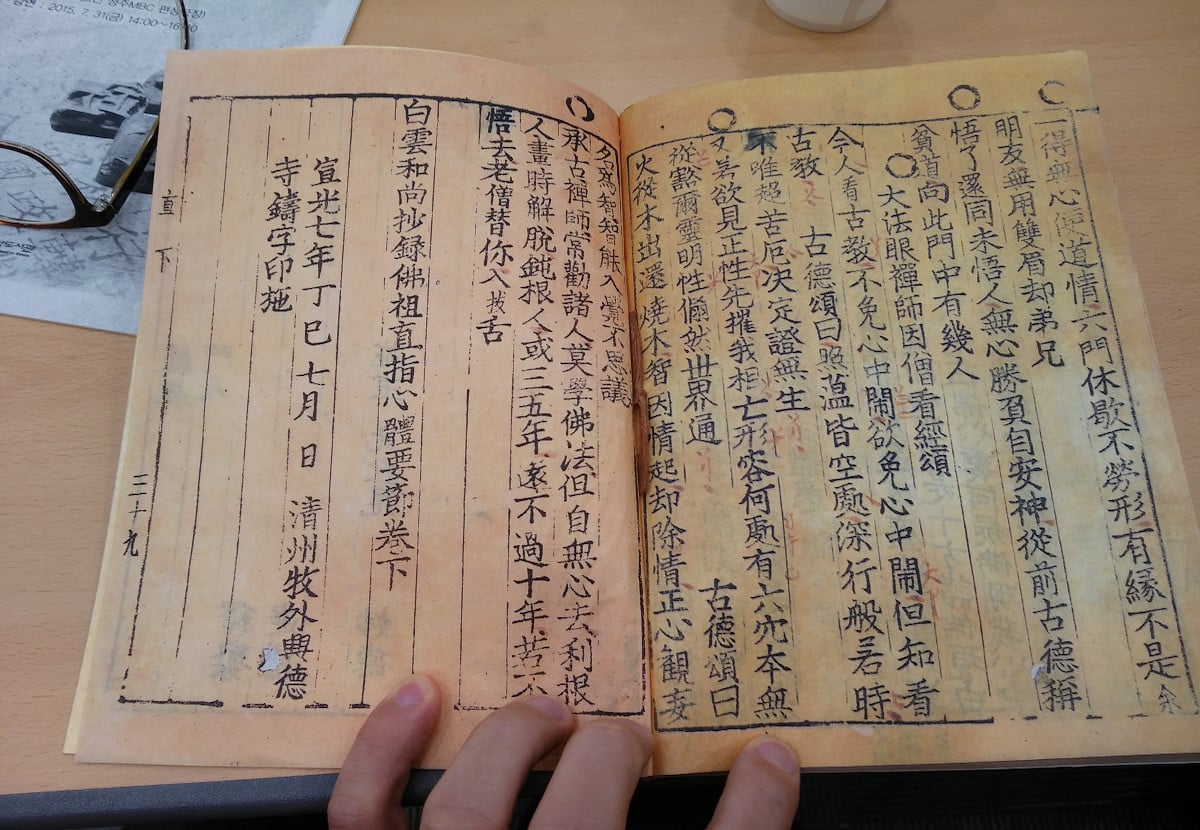
Do we know what the first printed book was? The Gutenberg Bible is considered the first printed book.. But that is in this part of the world. That is, from a Western perspective we can judge the Bible printed in Gutenberg's workshop as the first printed book.
However, other considerations that we will reveal in this article must also be taken into account. We invite you to join us a step back in time to discover what was the first printed book in history.
Johannes Gutenberg's printing press
Johannes Gutenberg (c. 1400-1468) was born in Mainz in the former Holy Roman Empire. He was the inventor of the modern printing press, from movable type around 1440.
Movable type consists of metal pieces arranged in drawers that printers used to engrave characters on paper.. They had specific characteristics and certain measurements that made it possible to print typographic elements or letters on paper.
This contraption It was a great advance for culture and for the development of humanity. And the first book that was printed was the Bible between 1450 and 1455. It was called the Gutenberg Bible or the 42-line Bible, because it corresponds to the number of printed lines on each page.
This was the first book printed with movable type in Europe (mobile typography). At the time the invention happened, it was a revolution because it coincided with the new Protestant ideology that pursued the reform of the Catholic Church with the figure of Martin Luther in the north center of the old continent.
In addition, the new invention allowed the mass production of copies that meant the slow, but progressive, cheapening of books and a greater diffusion among the population of knowledge. Of course, much would be missing for the democratization of culture and education. But thanks to the printing press, a path was opened that would facilitate access to books that had always been considered luxury objects only available to the nobility and the Church.

the incunabula
After this first impression of the Gutenberg Bible came new incunabula. Incunabula are the first books to be printed during the fifteenth century using the metal movable type devised by Gutenberg. So that, All books printed up to the year 1500 are considered incunabula..
Some of the first incunabula in Spain are found among religious, mythological, linguistic works and chivalric adventures. Valencia was a pioneer city in Spain in the printing of books with movable types.
Some relevant incunabula are the Bible (which was printed in the Valencian language in 1478), The twelve labors of Hercules (work written in Valencian and printed in 1483), Brace the White (in 1490, by Joan Martorell and one of the most important books of Valencian literature), the first grammar of a Romance language, the Castilian grammar of Antonio de Nebrija (1492), or the first edition of La Celestina by Fernando de Rojas in 1499 and a classic of Spanish literature.

The first printed book
Now, metal movable type has been used in Korea since the XNUMXth century. The first book printed in this procedure and of which there is evidence was a document of Buddhist philosophy, the jikji. It is a compilation of Zen teachings, whose first printed edition dates from the year 1377.
This book that in 2011 was recognized by UNESCO as part of the Memory of the World Program to give it the importance and value that it undoubtedly has. It is divided into two parts or volumes. But unfortunately, the whereabouts of the first book are unknown.
Likewise, the oldest known printed book also comes from the Far East: Diamond Sutra (XNUMXth century). Its impression was achieved thanks to techniques that used materials such as wood and bronze. It is a text that speaks of reaching the perfection of the spirit through sutras or Buddhist discourses.
Let's not forget that the history of the book has offered many techniques for reproducing writing. Gutenberg's printing press marked a before and after in book culture worldwide, a kind of expansive outbreak of the transmission of knowledge through paper pages.
But before there were already different techniques that humanity developed to the extent of the possibilities of its time. For example, before Gutenberg and his printing press, printing was already possible in Europe through wooden plates. More rudimentary and less efficient processes. Y the Chinese were already printing a long time before us; and they were, by the way, the fathers of paper.
In conclusion, it is surprising to see how science and technology develop indistinctly in one point and another on the planet in times when people were cut off from each other. But in the end, everyone follows their own path and achieves admirable progress for their society as a whole.